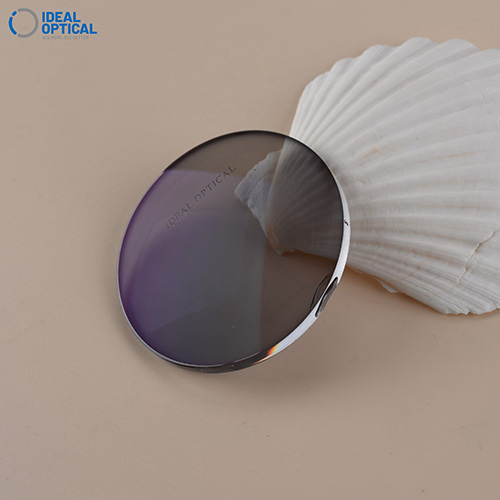With increasingly longer daylight hours and more intense sunlight, walking on the streets, it's not hard to notice that more people are wearing photochromic lenses than before. Prescription sunglasses have been a growing revenue stream in the eyewear retail industry in recent years, and photochromic lenses remain a steadfast summer sales staple. The market and consumer acceptance of photochromic lenses stem from their style, light protection, and driving-related needs.
Nowadays, more people are aware of the damage ultraviolet rays can cause to the skin. Sunscreen, parasols, baseball caps, and even ice silk arm covers have become essential items for summer outings. The damage UV rays do to the eyes may not be as immediately apparent as tanned skin, but in the long term, excessive exposure can lead to more severe consequences. Eye diseases like cataracts and age-related macular degeneration have been proven to have direct or indirect links to UV exposure. Currently, Chinese consumers do not have a unified concept of "when to wear sunglasses" based on sunlight conditions. Often, the outdoor lighting environment already requires light protection, but most consumers feel it is "unnecessary" and choose not to wear them. Against this backdrop, photochromic lenses, which provide both vision correction and light protection without the need for removal like regular sunglasses in different settings, are gaining acceptance among more people.


The principle of color change in photochromic lenses is based on "photochromism." In outdoor settings, these lenses darken to resemble sunglasses and revert to being clear and transparent indoors. This characteristic is linked to a substance known as silver halide. During the manufacturing process, lens producers infuse the base or film layer of the lenses with silver halide microcrystals. When exposed to strong light, the silver halide decomposes into silver ions and halide ions, absorbing most of the ultraviolet light and some visible light. When the light in the environment dims, the silver ions and halide ions recombine into silver halide under the reducing action of copper oxide, causing the lens color to lighten until it becomes clear and transparent again.
The color change in photochromic lenses is the result of a series of reversible chemical reactions, with light (including visible and ultraviolet light) playing a crucial role in these reactions. Naturally, the effectiveness of the color-changing process is influenced by seasons and weather conditions, so it doesn't always maintain a consistent and stable effect.
Generally speaking, in sunny weather, the intensity of ultraviolet rays is stronger, leading to a more intense photochromic reaction, and the lenses darken significantly. In contrast, on cloudy days, when UV rays and light intensity are weaker, the lenses appear lighter. Additionally, as the temperature rises, the color of photochromic lenses gradually lightens. Conversely, when the temperature drops, the lenses gradually darken. This is because at higher temperatures, the silver ions and halide ions, which were previously decomposed, are reduced back to silver halide under high energy, lightening the color of the lenses.

Regarding photochromic lenses, there are also some common questions and points of knowledge:
Do photochromic lenses have a lower light transmittance/clarity compared to regular lenses?
High-quality photochromic lenses are completely colorless when not activated and do not have lower light transmittance than regular lenses.
Why don't photochromic lenses change color?
The lack of color change in photochromic lenses is related to two factors: lighting conditions and the photochromic agent (silver halide). If they don't change color even in strong light and UV radiation, it's likely that the photochromic agent has been damaged.
Will the color-changing effect of photochromic lenses worsen over time?
Like any regular lenses, photochromic lenses also have a lifespan. With proper care, they generally last over 2-3 years.
Why do photochromic lenses become permanently darker over time?
If photochromic lenses darken over time and can't completely revert to transparent, it's because their photochromic agent can't return to its original state after changing color, resulting in a residual tint. This phenomenon is more common in lower-quality lenses, while good quality photochromic lenses won't have this issue.
Why are gray lenses the most common on the market?
Gray lenses can absorb infrared and 98% of UV rays. The biggest advantage of gray lenses is that they do not alter the original colors of objects, effectively reducing light intensity. They absorb light evenly across all spectrums, so objects appear darker but without significant color distortion, providing a true and natural view. Additionally, gray is a neutral color, suitable for everyone, making it more popular in the market.
Post time: Jan-11-2024





